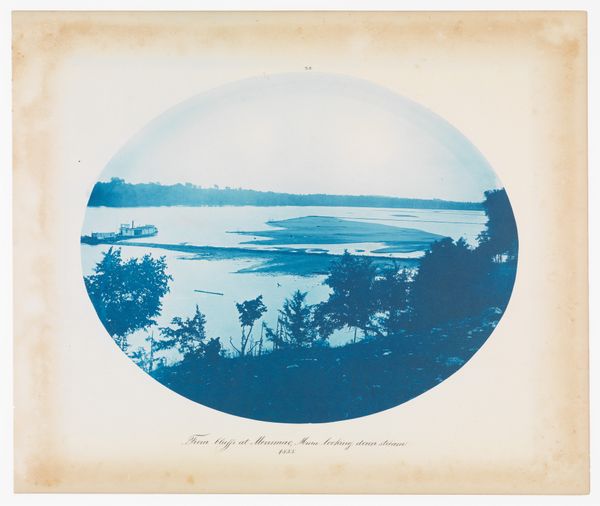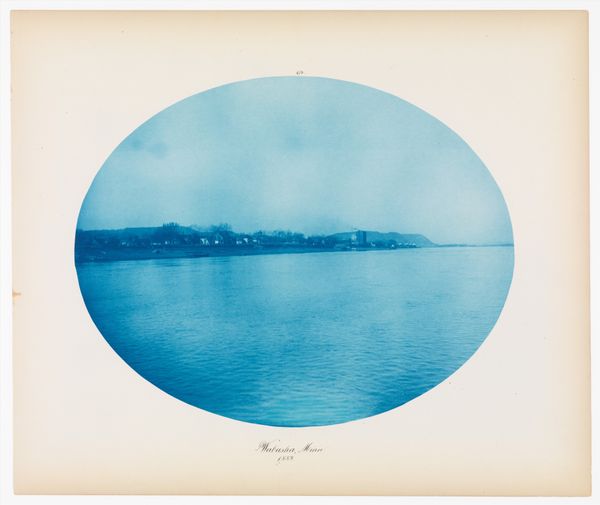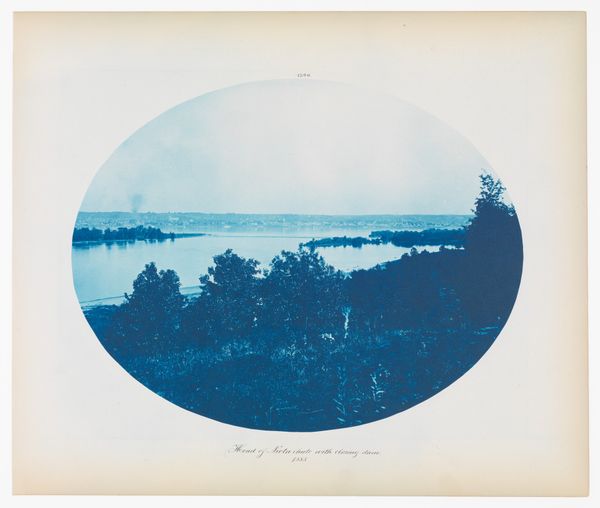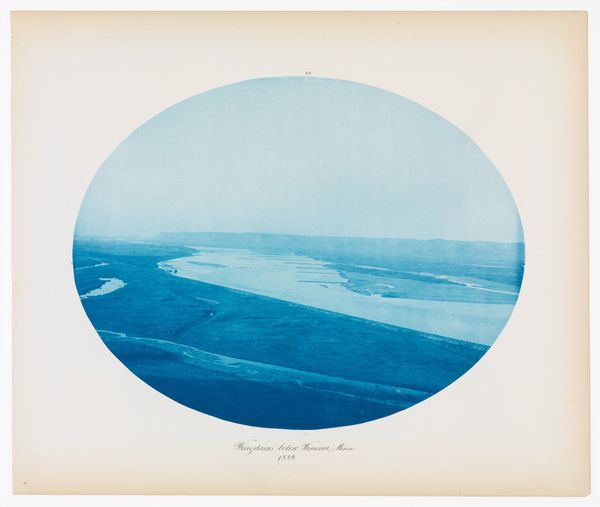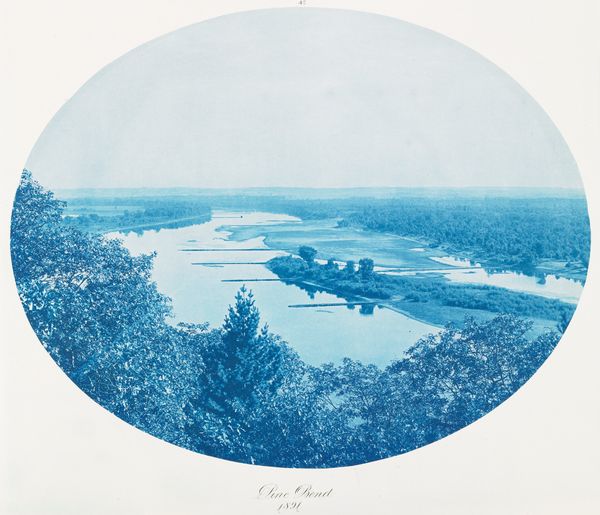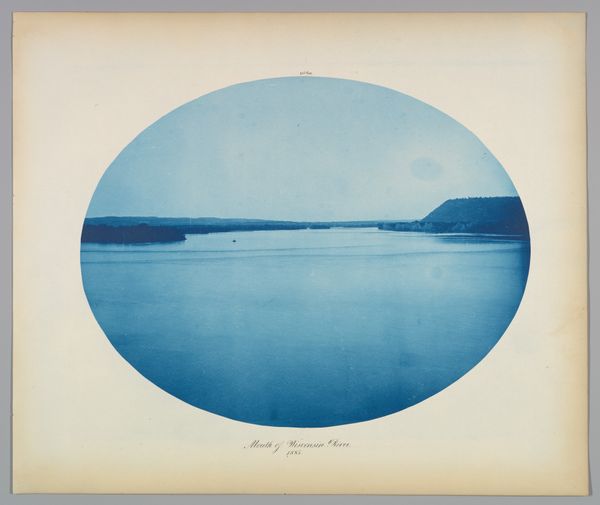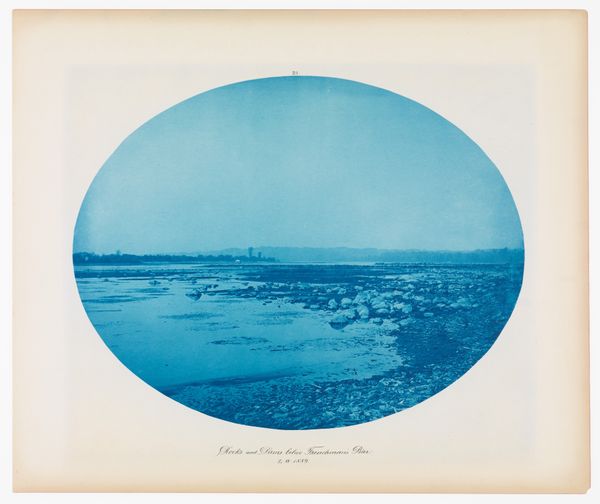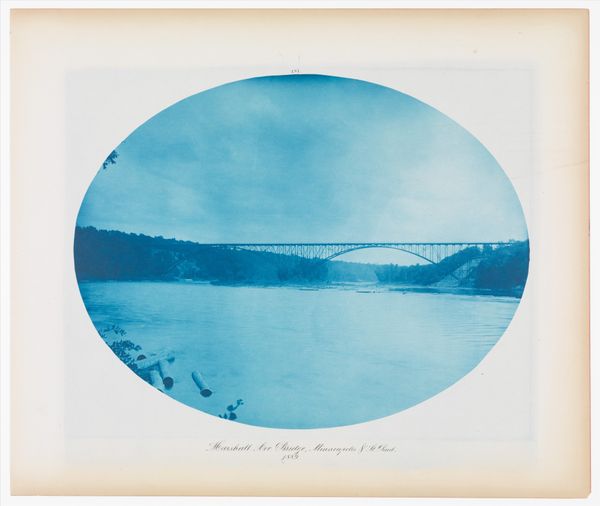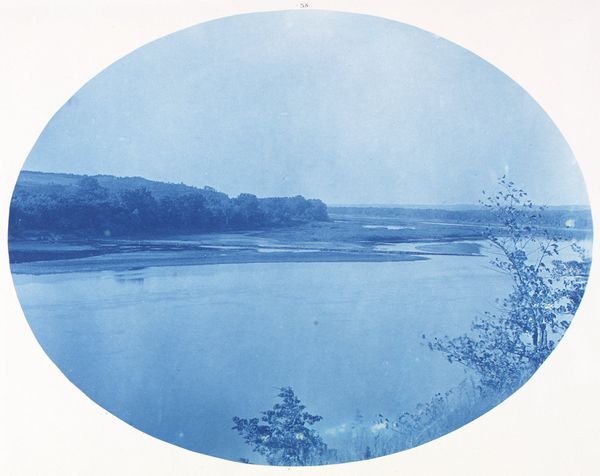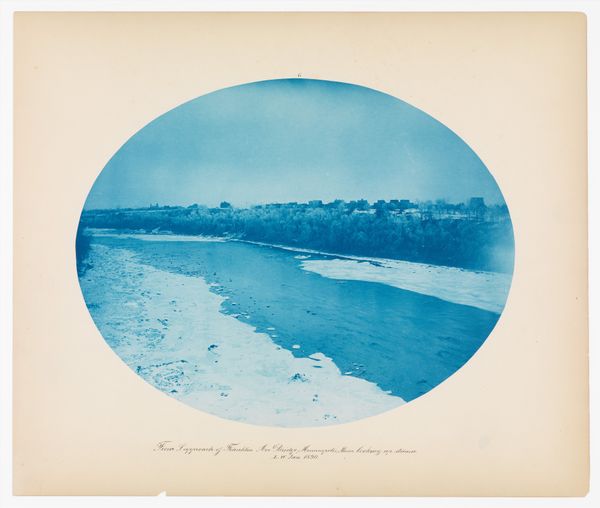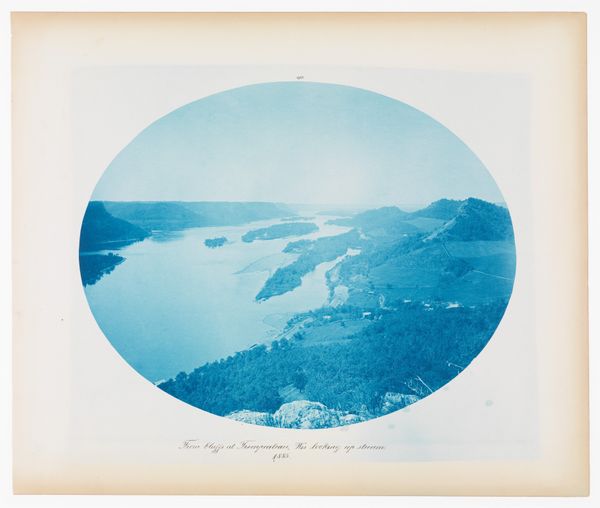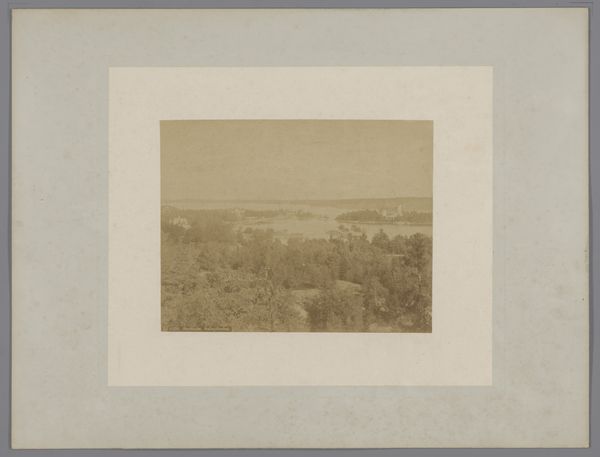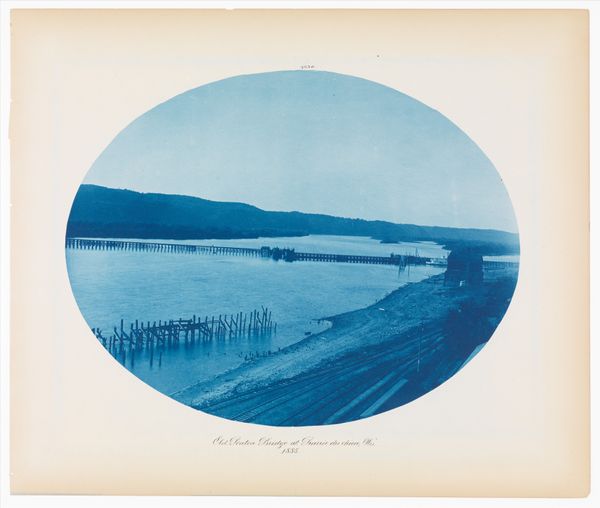
cyanotype, photography
#
impressionism
#
landscape
#
cyanotype
#
photography
Dimensions: Image: 10 9/16 × 13 1/2 in. (26.8 × 34.3 cm), oval Sheet: 14 7/16 × 17 3/16 in. (36.7 × 43.7 cm)
Copyright: Public Domain
Henry Bosse made this print of "Pine Bend" in 1885 using the cyanotype process, an early photographic technique that yields a distinctive Prussian blue hue. The image is created through a contact printing process, where a negative is placed directly onto paper treated with iron salts, and then exposed to ultraviolet light. The deep blue color saturates every detail of the landscape, from the dense foliage in the foreground to the distant horizon. This was not Bosse's artistic innovation - it was a process adopted for its efficiency. As a cartographer and engineer for the US Army Corps of Engineers, Bosse made hundreds of cyanotypes documenting the Mississippi River. Cyanotypes like this one were valued more for their practical utility than their aesthetic qualities. The cyanotype's simplicity and relative permanence made it ideal for reproducing maps and technical drawings. But consider the implications of this particular photograph: the taming of nature through the industry and labor required to render the scene through both the lens and the chemistry. It is important to acknowledge the social context and purpose behind the materials and processes used in making.
Comments
No comments
Be the first to comment and join the conversation on the ultimate creative platform.
